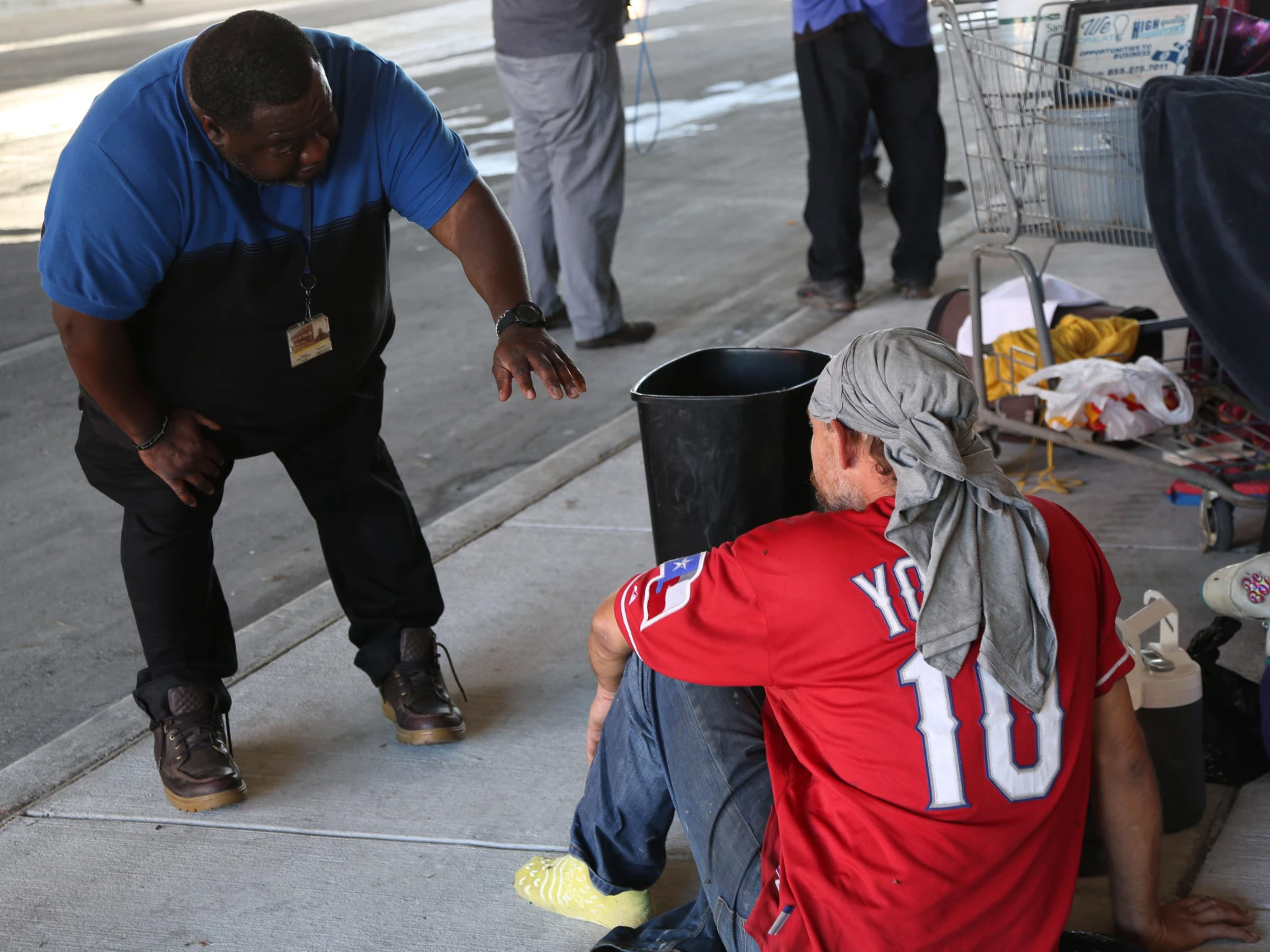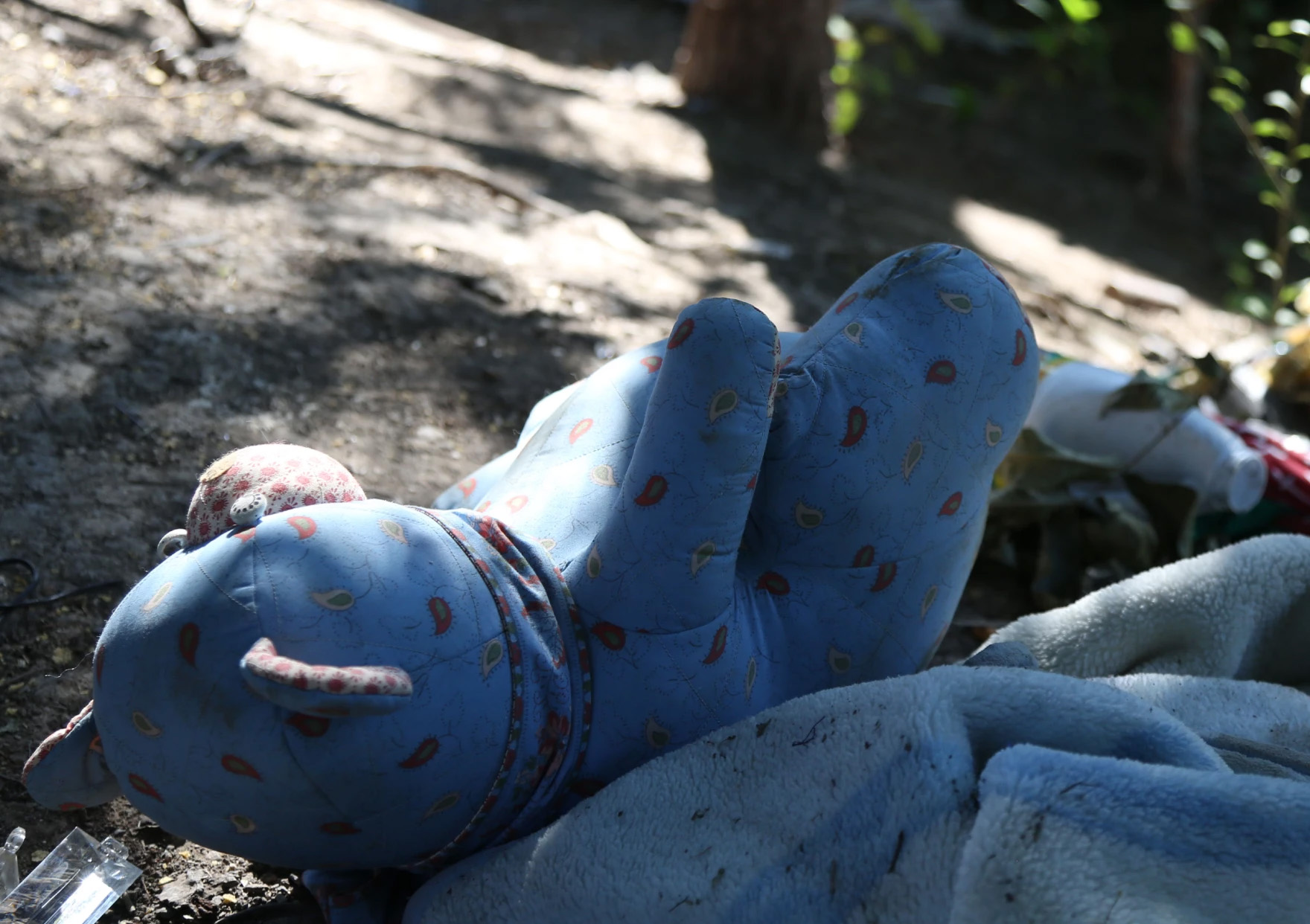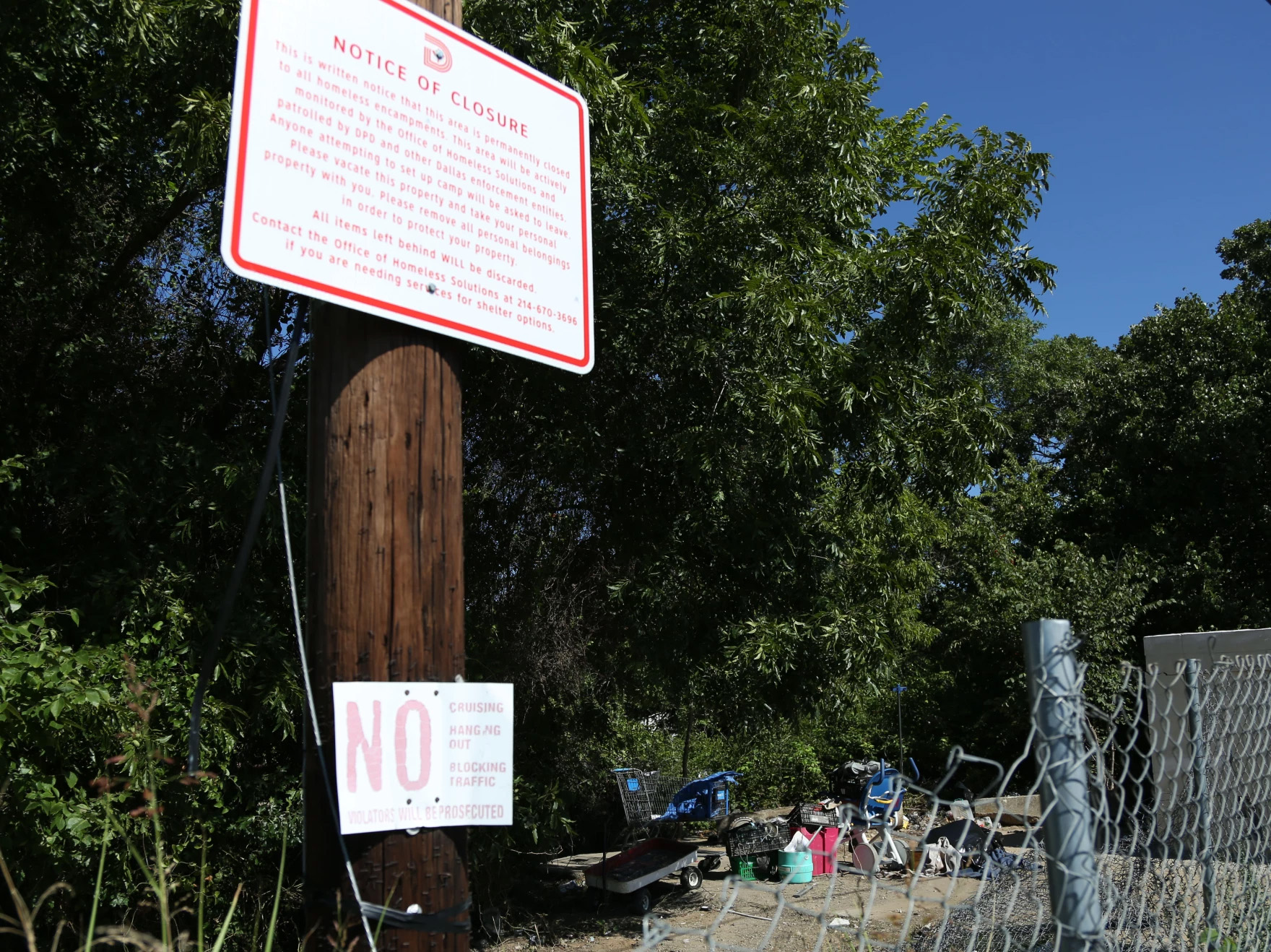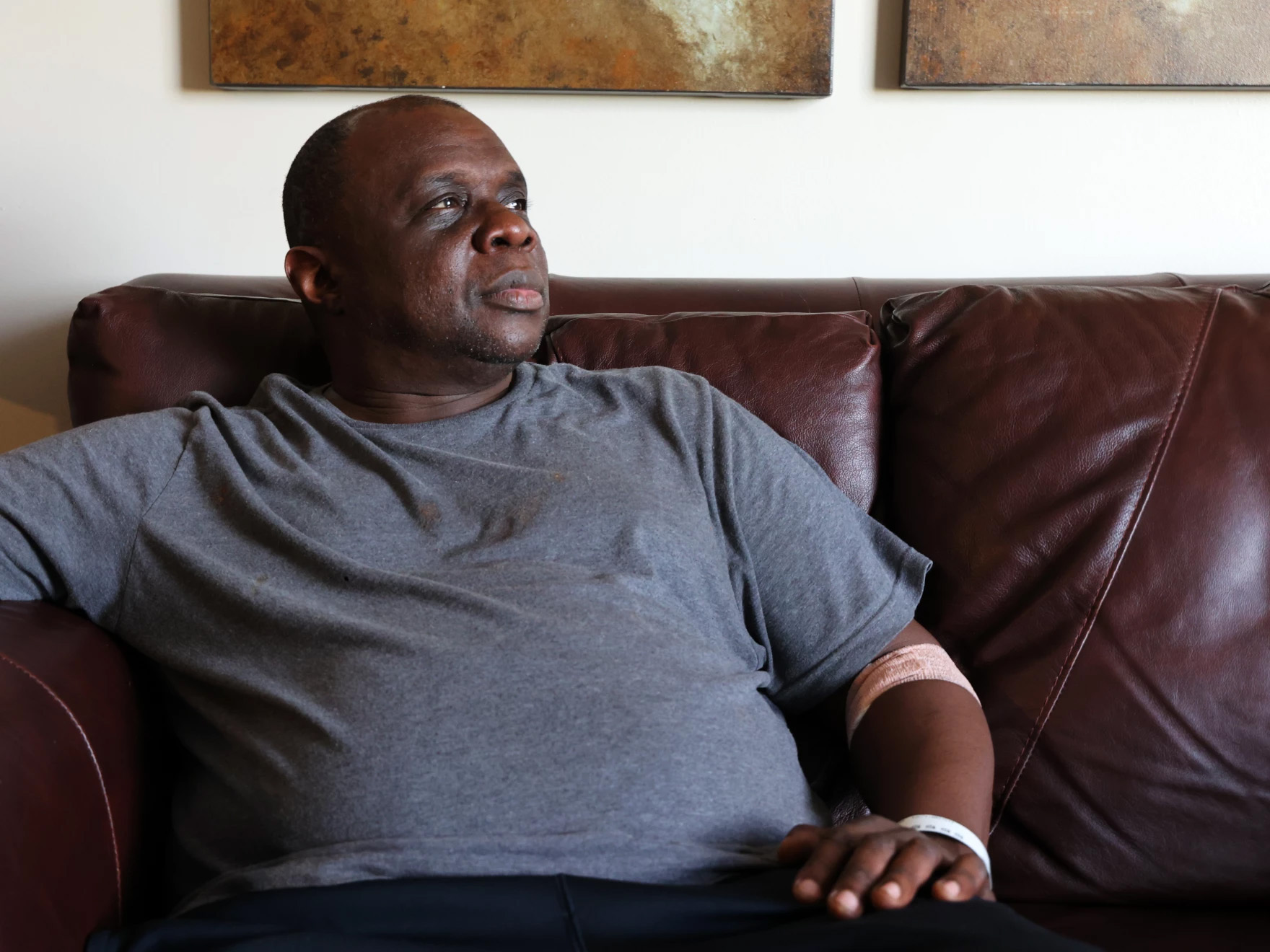From KERA:
On a sunny afternoon, nearly a dozen workers schlepping up and down the steep, rocky ravine trash and items left behind by the community of people who once lived here. It’s sweaty work, heaving huge black garbage bags onto the back of a truck.
Abandoned belongings pile up in the dirt at the top of the hill — books and board games, backpacks and clothes, coolers and plastic storage bins. A blue wheelchair printed with “E.R.” in red block letters sits on its side next to a pair of walkers, a pink bicycle, a big blue teddy bear, and a rusting shopping cart.
This encampment, among the trees and in the shelter of a nondescript bridge on Ledbetter Road, is now permanently closed. A city sign sternly warns that the site is monitored by the city. By the end of the day, it will be fenced off, making it difficult to get down to the area where a group of Dallas’ least fortunate residents once lived.
Dallas is increasingly focused on moving people out of encampments by finding them the right mix of housing and services to keep them stably housed. It’s fueled by unprecedented federal spending, and driven by a complex, coordinated strategy involving many players in homeless services. But on the streets, it’s not clear that the strategy has done much to undo deep mistrust of the city’s intentions when it comes to tackling homelessness.
Unprecedented spending
The cleanup on Ledbetter Road is the end stage of a decommissioning process Christine Crossley says is the gold standard for closing encampments.
For weeks before the cleanup began, Crossley’s Office of Homeless Solutions worked with nonprofits and other agencies to build rapport with the people who lived here, getting them into the region’s network of services for people experiencing homelessness, connecting them with caseworkers, and lining up housing.















